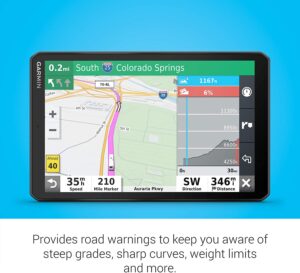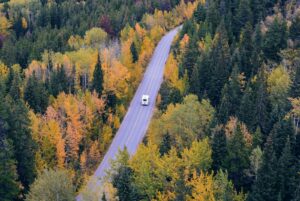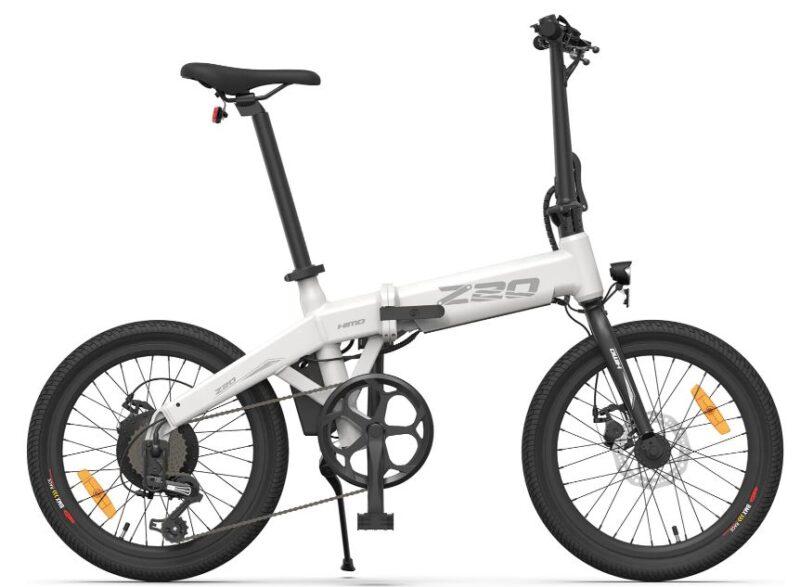
10 Tips on Driving a Motorhome In Scotland
Familiarize yourself with the size and handling of your motorhome
Be sure to familiarize yourself with the size and handling of your motorhome before setting off on a trip, especially if you are not used to driving a larger vehicle. Motorhomes can be more challenging to drive than smaller vehicles, especially on narrow, winding roads, so it’s important to take the time to get used to the handling of your vehicle before you start your journey. Make sure you are comfortable with the size and handling of your motorhome before setting off and be prepared for the possibility of encountering narrow bridges and low overhead clearances on your trip. Understand C1 licence permissions for vehicles over 3500kg. Know your vehicle weights, In 2022 80% of motorhomes and campers stopped by the DVSA were over weight!
Be Prepared
It’s important to be prepared for the possibility of encountering narrow bridges and low overhead clearances, especially in rural areas of Scotland. These types of obstacles can be especially challenging for motorhomes, which are often taller and wider than smaller vehicles. Before setting off on your trip, it’s a good idea to check the dimensions of your motorhome, including its height and width, to ensure that you will be able to safely navigate any narrow bridges or low clearances you may encounter on your journey. When driving under low bridges, be sure to pay attention to any warning signs, and take care to ensure that your vehicle will fit safely through the clearance. If you are unsure whether your motorhome will fit under a particular bridge, it’s best to err on the side of caution and find an alternative route.
Observe The Speed Limits
 Police Scotland is strict when enforcing speed limits. Speed cameras and Average Speed cameras are abundant, especially on the A9 and it’s important to observe the speed limits at all times when driving in Scotland, as the speeding fines are steep. Speed limits in Scotland are generally lower than in other countries, so it’s important to pay attention to the speed limit signs. In addition to observing the speed limits, it’s also important to be prepared for the possibility of encountering road works and temporary traffic lights on your journey. These are common in Scotland, especially during the summer months, and can cause delays or require you to adjust your speed. Be prepared for the possibility of encountering these types of obstacles, and allow extra time for your trip if necessary.
Police Scotland is strict when enforcing speed limits. Speed cameras and Average Speed cameras are abundant, especially on the A9 and it’s important to observe the speed limits at all times when driving in Scotland, as the speeding fines are steep. Speed limits in Scotland are generally lower than in other countries, so it’s important to pay attention to the speed limit signs. In addition to observing the speed limits, it’s also important to be prepared for the possibility of encountering road works and temporary traffic lights on your journey. These are common in Scotland, especially during the summer months, and can cause delays or require you to adjust your speed. Be prepared for the possibility of encountering these types of obstacles, and allow extra time for your trip if necessary.
Take extra care in built-up areas
Yes, that’s correct. It’s important to take extra care when driving through towns and villages, as pedestrians and cyclists may not always be easily visible. In residential areas, be on the lookout for pedestrians, especially children, who may be crossing the road or playing near the street. Slow down when driving through these areas, and be prepared to stop if necessary. In addition, watch out for cyclists, who may be riding on the road or on a dedicated bike lane. When passing a cyclist, allow plenty of room and be prepared for the possibility of them swerving or changing direction unexpectedly. By taking extra care when driving through towns and villages, you can help ensure the safety of pedestrians and cyclists, as well as other road users.
Drinking Alcohol
The drink drive limit in Scotland is lower than in the rest of the UK and many other countries, and the penalties for drunk driving are severe. In Scotland, the legal blood alcohol limit for drivers is 50 milligrams of alcohol per 100 millilitres of blood, so be aware of this if you are planning to drive in Scotland. Even a small amount of alcohol can affect your ability to drive safely, so it’s best to avoid drinking any alcohol at all if you are going to drive. If you do choose to drink, be sure to plan ahead and arrange for a designated driver or alternative transportation. The penalties for drink driving in Scotland are severe and can include fines, imprisonment, and a driving ban.
Be aware of the weather
Scotland can experience harsh and changeable weather, with fog, rain, and snow being particularly common. It’s important to be aware of the weather conditions when driving in Scotland and to take extra care in poor visibility or adverse weather. In fog, reduce your speed and use your headlights or fog lights to help you see the road ahead. In rain, be prepared for slippery roads and take extra care when braking or turning. If you are driving in snow or ice, be sure to use winter tires or all-season tires, and reduce your speed to account for the reduced traction. It’s also a good idea to keep an emergency kit in your vehicle, in case you get stranded due to adverse weather. By taking extra care in fog, rain, and snow, you can help ensure your safety and the safety of other road users.
Use your headlights
It’s a good idea to use your headlights at all times when driving in Scotland, even during the day, to make your vehicle more visible to other road users. Headlights not only help you see the road ahead, but they also help other drivers see you, which can help prevent accidents. In addition to using your headlights, it’s also a good idea to use your turn signals when changing lanes or turning, to let other road users know what you are doing. By using your headlights and turn signals, you can help improve the safety of your journey and reduce the risk of accidents.
Driving a Motorhome for the first time
If you are driving a motorhome for the first time, or if you are not used to driving in Scotland, a GPS device can be a useful tool to help you navigate. A GPS device can provide turn-by-turn directions, alert you to potential hazards, and help you find your way to your destination. Many rental companies offer GPS devices as an optional extra when you hire a motorhome, but you can also purchase your own GPS device or use a smartphone app. If you do use a GPS device, be sure to follow the directions carefully and pay attention to any warnings or alerts. Remember, a GPS device is not a substitute for your own judgment, plan and know your route beforehand using a map, and it’s important to use common sense and follow the rules of the road when driving.
Planning to stay overnight
Wild camping, or camping on unoccupied land without the landowner’s permission, is generally not allowed in Scotland. If you are planning to stay overnight in your motorhome, it’s important to look for campsites or designated motorhome parking areas (aires/stopovers) rather than attempting to wild camp. There are many campsites and motorhome parks available throughout Scotland, offering a range of facilities and services. Some campsites may have restrictions on the size or type of vehicle that can stay overnight, so it’s a good idea to check the campsite’s policies before booking. In addition to campsites, there are also many designated motorhome parking areas available, which offer overnight parking for a fee. These areas are generally well-maintained and offer basic facilities, such as waste and water disposal. By staying at a campsite or designated motorhome parking area, you can help protect Scotland’s natural beauty and respect the rights of landowners. Phone Apps that can help with this, Park4night, Search4sites. There are also many Facebook Groups that cater for stopover/parkups.
Hiring a motorhome

There are numerous hire companies in Scotland, (we recommend Open Road Scotland Based at Glasgow Airport) check their reviews to see what experience previous hirers have had. It’s important to read the terms and conditions of the rental agreement carefully when hiring a motorhome, as some rental companies may have restrictions on where you are allowed to drive the vehicle. For example, some rental companies may prohibit driving on certain types of roads, such as off-road tracks or unmade roads, due to the potential for damage to the vehicle. If you are planning to drive on these types of roads, it’s a good idea to check the rental agreement before setting off to ensure that you are not in violation of the terms of your rental. In addition to road restrictions, the rental agreement may also have other terms and conditions that you need to be aware of, such as restrictions on the number of miles you can drive, or rules about smoking or pets in the vehicle. By reading the terms and conditions of the rental agreement carefully, you can help ensure that you are aware of any restrictions or obligations that apply to your rental.
Motorhome Travel Expenses Spreadsheets
Shop YouTube Channel youtube.com/@johnnysbackyard/?sub_confirmation=1
Why not join our Facebook Group Motorhome Touring Scotland? https://www.facebook.com/motorhometouringscotland
Sign up for Johnny’s Back Yard online Store for Motorhome & Caravan Accessories Newsletter and we will let you know when new products are released. Newsletter link: http://eepurl.com/hND3Ir
Website Store https://www.johnnysbackyard.co.uk
Check out the Useful Links Page for more goodies https://johnnysbackyard.co.uk/useful-links-and-things/recommended-campsites/
Support the shop https://www.paypal.com/donate/?hosted_button_id=MZ4U3STTL4YV6
YouTube https://www.youtube.com/channel/UCMO8bf5oorGtPxHGCPzg6bw/?sub_confirmation=1
Twitter https://twitter.com/MotorhomeandC
Instagram https://www.instagram.com/johnnyburr3
Facebook https://www.facebook.com/groups/179155772711444
Pinterest https://www.pinterest.co.uk/johnnyburr3
Buy Me A Coffee https://www.buymeacoffee.com/johnnyburr



















